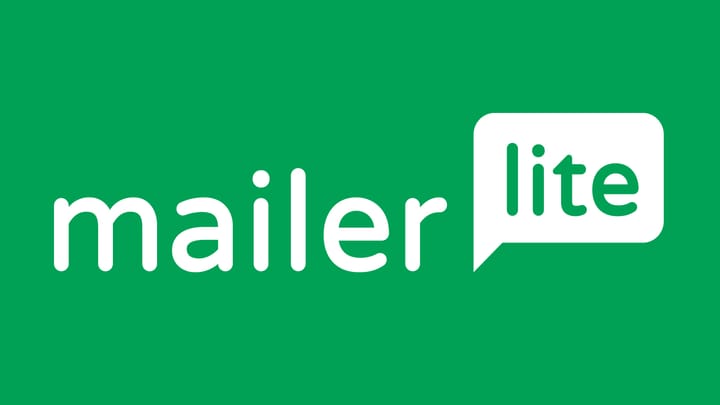SendGrid Review (2025): Pros, Cons, and Alternatives
With the increasing importance of email marketing in the information overload era, it is crucial for maintaining direct and personalised communication with audiences. This comprehensive 2025 SendGrid review provides a nuanced analysis and comparisons with alternative platforms.

SendGrid has undeniably marked its territory in the digital arena as a prominent email marketing and communication platform.
They cater their services to a wide array of businesses seeking to amplify their customer engagement and even brand awareness through email.
And as the significance of email marketing and transactional email services continues to soar in this age of information overload, they are becoming pivotal tools for companies aiming to maintain direct and personalised communication with their audience.
In this comprehensive SendGrid review for 2025, we unveil the intricacies of SendGrid as a leading email marketing and communications platform and are designed to provide a nuanced look at the strengths and weaknesses of SendGrid, along with a consideration of alternative platforms, enabling readers to make an informed decision about their email marketing strategies in 2025.
SendGrid Overview
SendGrid continues to evolve as a leading email marketing and transactional email platform, but 2025 has brought significant updates to consider.
The platform has enhanced its API capabilities, introduced new AI-powered deliverability features, and updated its pricing structure to better compete in an increasingly crowded market.
Recent developments include improved spam filtering algorithms, enhanced security protocols with advanced two-factor authentication, and streamlined dashboard navigation based on user feedback. However, the platform maintains its reputation for technical complexity, which continues to challenge non-technical users.
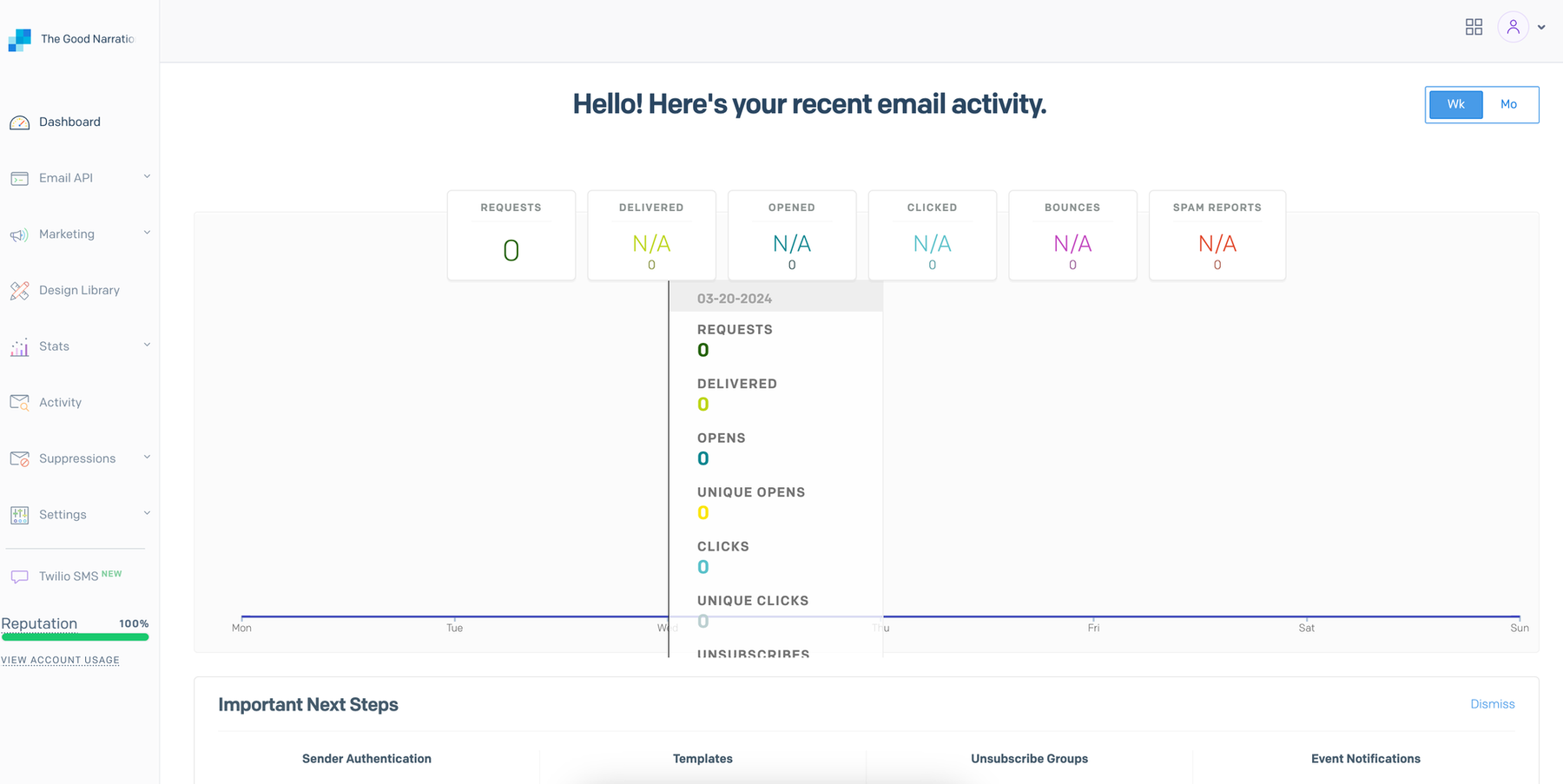
SendGrid’s User Interface and Customer Experience
Upon logging into SendGrid, based on personal use, users are greeted with a dashboard that offers a nuanced view of their email campaign's performance.
The interface shows and allows users to quickly assimilate recent statistics, with options to filter reports on a weekly or monthly basis. It provides an at-a-glance overview of request data, delivery metrics, open rates, click-through rates, bounces, and spam reports.
Below the dashboard, additional sections cover administrative details, unsubscribe groups, and essential resources like a setup guide and support contacts.
The interface's left corner houses main navigation links to the Dashboard, Email API, Marketing, Design Library, Stats, Activity, Suppressions, and Settings, ensuring that all features are within easy reach.
SendGrid may have laid out all these features on the dashboard with the intent of being accessible, but it’s still hard for someone to go over them and find the features that need to be used for a specific campaign. A non-techy user might find the interface a bit tricky and difficult to comprehend.

Registration Process
The registration process for SendGrid can be somewhat detailed, requiring several steps to ensure a secure setup. New users begin by signing up with their email address, followed by setting up two-factor authentication (2FA) for added security.
There are also additional verification steps, including providing full names, website information, and other details to complete account setup, ensuring that the user's identity and purpose of use are thoroughly vetted.
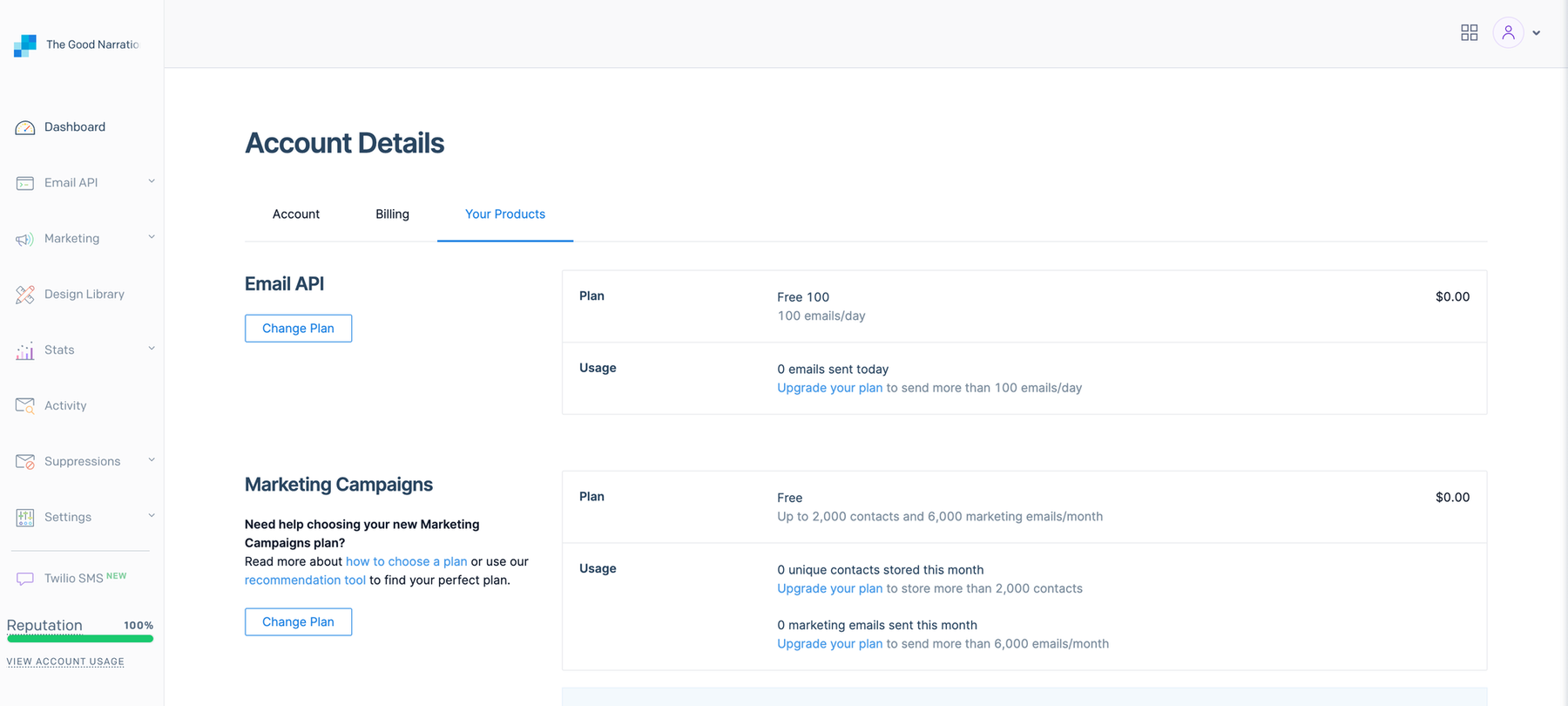
Pricing and Plan Options
SendGrid created their pricing structure to accommodate businesses with a wide range of needs. Here are some of their pricing options:
- Free Plan- Their plan starts with a free plan that includes basic features such as APIs, SMTP Relay, Webhooks, delivery optimisation tools, a dynamic template editor, and insightful analytics.
This plan provides ticket support and a 3-day email activity history, aimed at small-scale users or those just starting out.
- Essential Plan- This plan enhances the free plan’s offerings with guaranteed ticket and chat support response times, additional webhooks, and a larger volume capacity, starting at $19.95/month for 50,000 emails.
This tier caters to businesses with growing email requirements.
- Pro Plan- SendGrid offers advanced features for this plan, including a 7-day email activity history, more event webhooks, email testing credits, email validations, and a dedicated IP, with prices starting at $89.95/month for 100,000 emails.
- Premier Tier Plan- This plan is created for large-scale operations. It provides all Pro’s features plus prioritised full-support and significantly higher email send limits.
This also gives users some customisation to accommodate the unique needs of large enterprises.
- Add-ons- Aside from having the SendGrid base plans, customers can also have the option to include add-ons such as an extended email activity history, additional dedicated IP addresses, email email testing credits, and email address validation, providing businesses with the flexibility to modify for the enterprise's needs.
Pros and Cons of SendGrid
No matter how perfect you think an SMTP service is, it is still wise to weigh in the pros and cons of it. This is important to read, especially from those who have used it first-hand.
Below are the specifics:
Pros of SendGrid
Reliability and Uptime Statistics
SendGrid is known for its reliability and the robust uptime it offers.
According to user feedback and performance metrics, SendGrid maintains an impressive uptime record, ensuring that emails reach their intended recipients without delay. This reliability is foundational for businesses that rely on timely email delivery for transactions, marketing, and customer engagement.
Scalability
SendGrid prides itself on its scalability. They accommodate growing businesses, adjusting the increased volume demands without compromising performance. Whether an enterprise is about to send thousands of emails, their infrastructure can handle the load, making it reliable for any business size.
Reporting and Analytics
SendGrid provides detailed insights through its analytics and reporting features. They give users real-time data access regarding email engagement, open rates, click-through rates, and bounce rates, among other metrics.
This information's accessibility allows businesses to refine their email campaigns for maximum impact.
Integration Options with Other Platforms
The platform offers extensive integration options, allowing businesses to connect SendGrid with a wide variety of apps and services they already use. Integrating SendGrid into marketing platforms and customer relationship management (CRM) systems makes workflows easier and boosts the overall effectiveness of email marketing.
Customisation and Branding Capabilities
SendGrid offers customisation and branding capabilities, enabling businesses to adapt their email communications to reflect their unique brand identity. With dynamic template editors and a user-friendly interface, creating personalised, brand-aligned emails is straightforward and effective.
Cons of SendGrid
Pricing Structure
Analysis of SendGrid's pricing compared to the features offered reveals that the platform provides a scalable solution for businesses of all sizes.
However, some users find the pricing tiers to be somewhat prohibitive, especially for small businesses or startups that are just beginning to scale their email campaigns.
The jump from the more affordable plans to the next level with advanced features can be exorbitant, leading to a careful evaluation of cost versus benefit.
Learning Curve
User feedback on usability and initial setup complexity indicates that new users may face a steep learning curve. It’s a bit complex to use, as it’s hard to navigate where the buttons are, even though they may have organised it in a bare-bones structure.
This can lead to frustration for users who are not as tech-savvy or who prefer a more intuitive interface.
Customer Support
Insights into customer support responsiveness and effectiveness reveal mixed reviews. Some users report that they faced challenges getting timely assistance, particularly when dealing with complex issues or during peak times. These varied experiences underscore the importance of continuous improvement in customer service to cater to user needs effectively.
One notable comment found online was when a new, growing company switched from Mailgun to Sendgrid in an attempt to amplify their email communication. It was perhaps a bad experience when it came down to working with the team at SendGrid. The former SendGrid user commented that they had a lot of difficulties getting transparent information throughout the sales and onboarding process and felt like they were being ignored because of the size of the company.
Integrations and Customisation
While SendGrid offers a wide range of integrations with platforms such as WordPress, Shopify, and Salesforce, some users have reported challenges integrating the platform with less commonly used software. This can limit its usability for businesses that rely on specialised tools for their marketing campaigns.
Moreover, while SendGrid offers customisation options through templates and APIs, some users have stated that the customisation process can be time-consuming and requires technical expertise.
Data Security
With email marketing being a critical aspect of business communication, data security is inevitably the top priority for users.
SendGrid offers various security measures, such as encrypted connections and two-factor authentication, to protect user data. However, some users have expressed concerns about potential vulnerabilities in the platform's security protocols, such as giving personal information to access the platform.
This highlights the need for continuous updates and improvements to ensure data privacy and security for users.
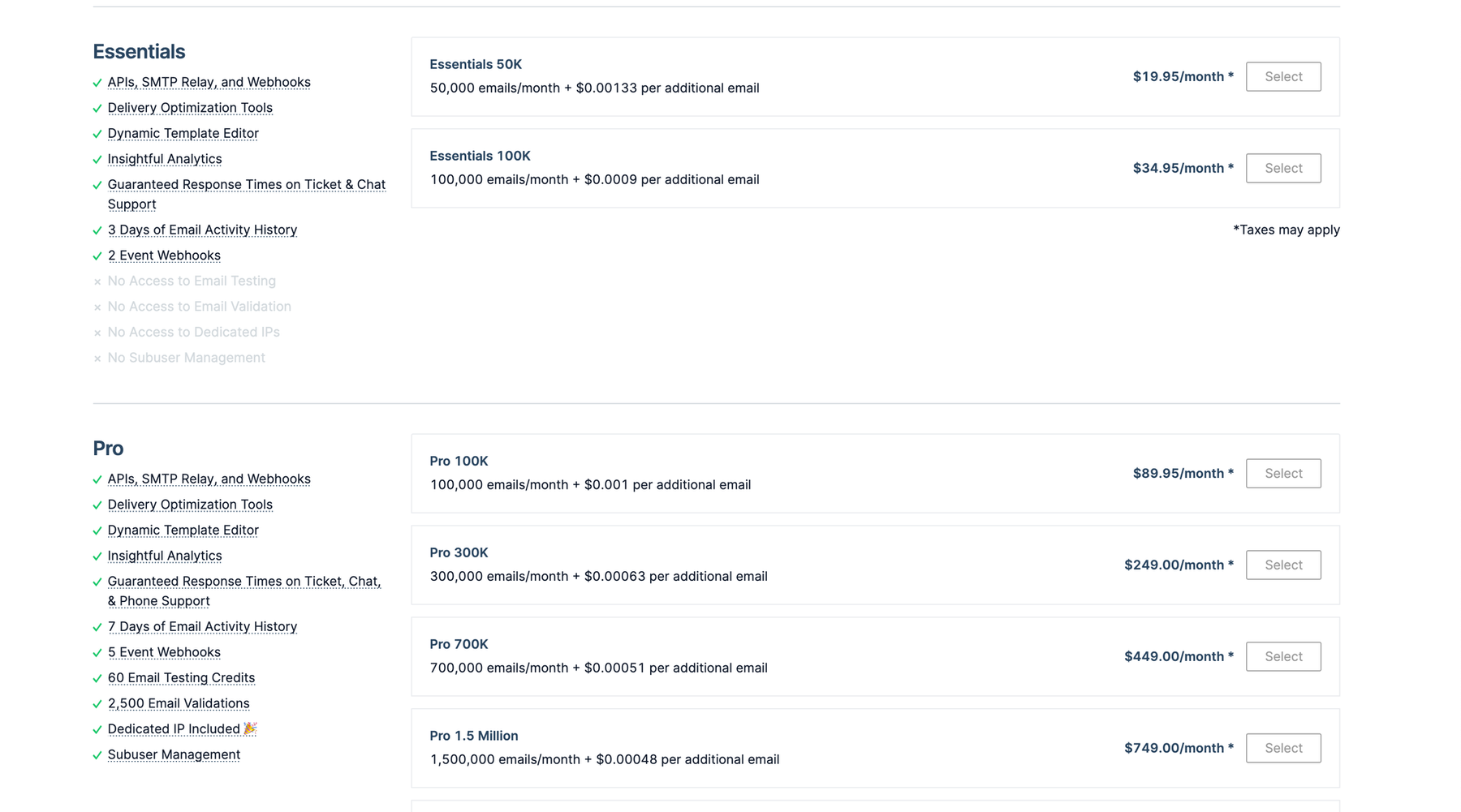
Pricing
SendGrid offers a range of pricing plans, including a free option for up to 2,000 subscribers and paid plans with more advanced features.
However, while many users appreciate the flexibility in choosing a plan that suits their needs, some have found the pricing structure confusing and have faced unexpected charges on their bills.
It is important for users to carefully review the pricing options and understand the features included in each plan to avoid any surprise costs.
Overall User Experience
SendGrid has received mixed reviews from users regarding its overall user experience. While some praise its ease of use and helpful customer support, others have reported encountering technical issues and experiencing delays in receiving support.
This highlights the importance of thorough research and testing before committing to an email marketing platform, as well as the need for prompt and efficient customer service.
Alternatives to SendGrid
In exploring alternatives to SendGrid, it becomes essential to consider various factors such as quality, pricing plans, ease of use, and the level of technical expertise required for effective utilisation.
Below is an analysis of several potential competitors and how they stack up against SendGrid.
1. Maileroo
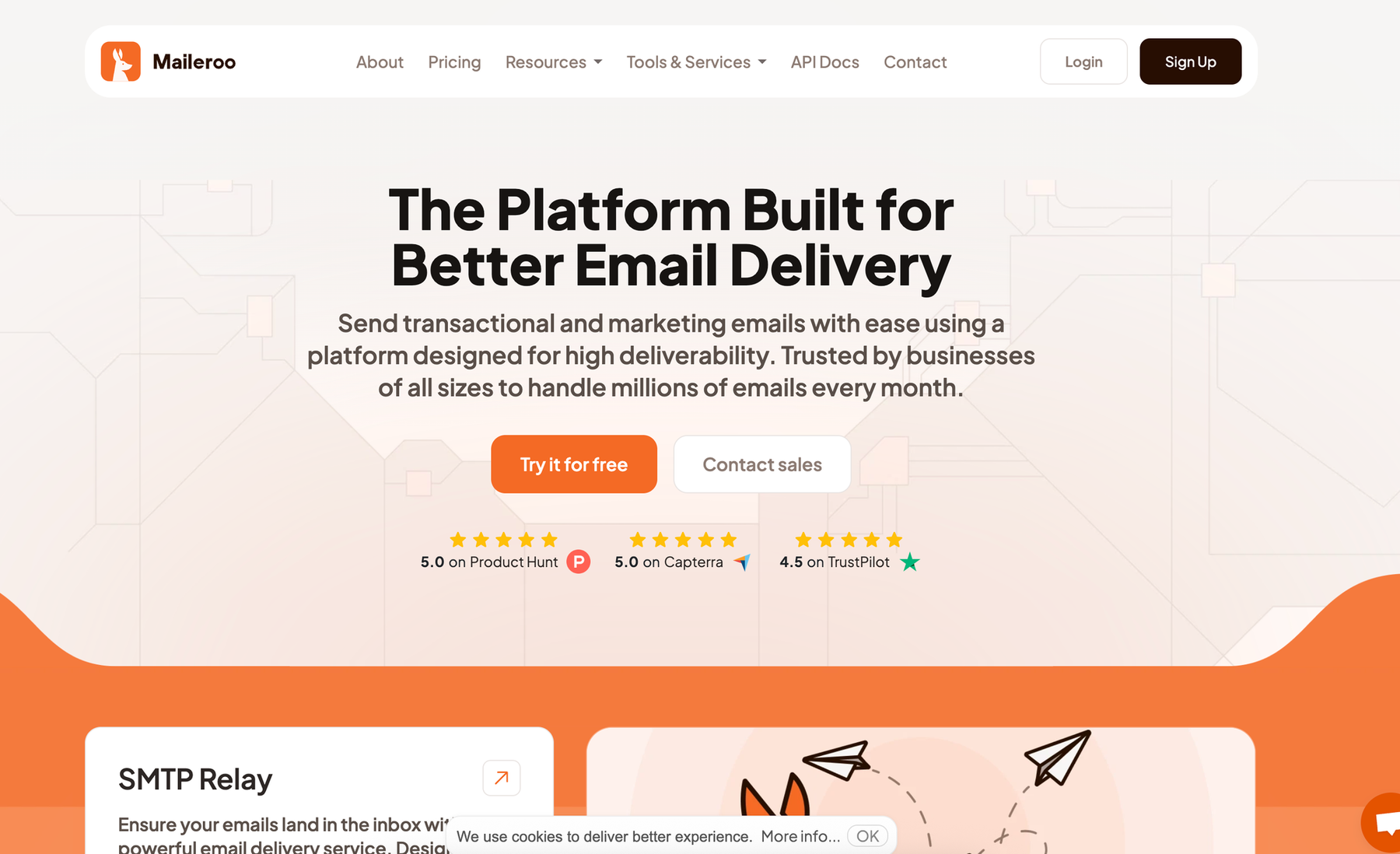
Maileroo emerges as a notable alternative, particularly when focusing on quality and pricing plans. It offers a user-friendly interface and competitive pricing, making it accessible for businesses of all sizes.
When compared to SendGrid, users may find Maileroo's simplified pricing model and personalised customer service more appealing, especially for those new to email marketing.
2. AhaSend
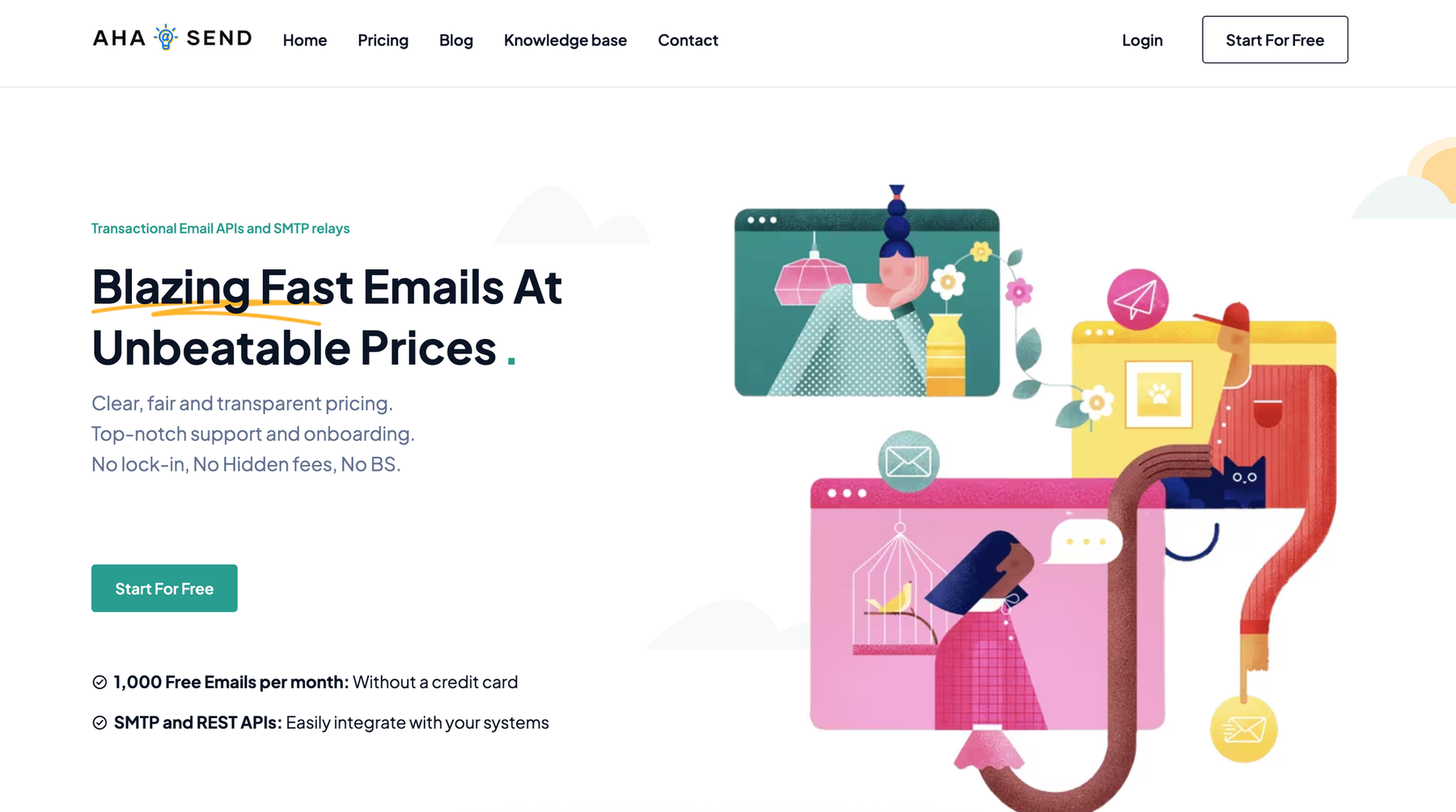
AhaSend offers a no-frills approach to email delivery with competitive pricing and reliable service. The platform focuses on core email functionality without complex features, making it ideal for straightforward email campaigns.
Benefits include simple pricing, reliable delivery, easy setup, and responsive customer support. AhaSend is perfect for businesses that need basic email functionality without premium costs.
3. Mailgun
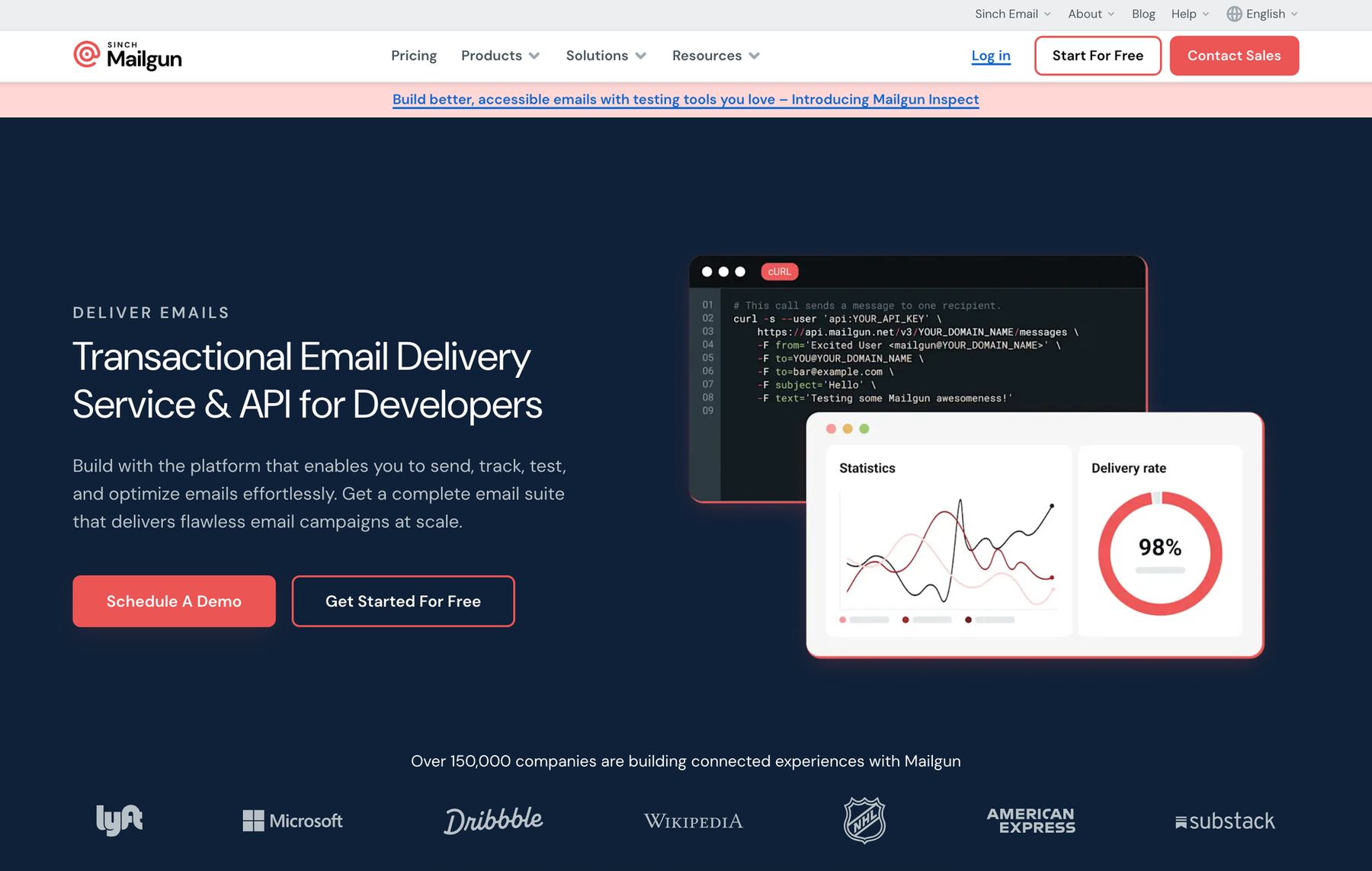
Mailgun excels in providing developer-friendly email infrastructure with extensive API functionality. The platform offers advanced email validation, detailed logging, and flexible routing options. Its pay-as-you-scale pricing model makes it cost-effective for businesses with variable email volumes.
Notable features include intelligent route optimization, comprehensive webhook support, and advanced analytics. Mailgun's technical documentation is considered among the best in the industry.
4. Amazon SES
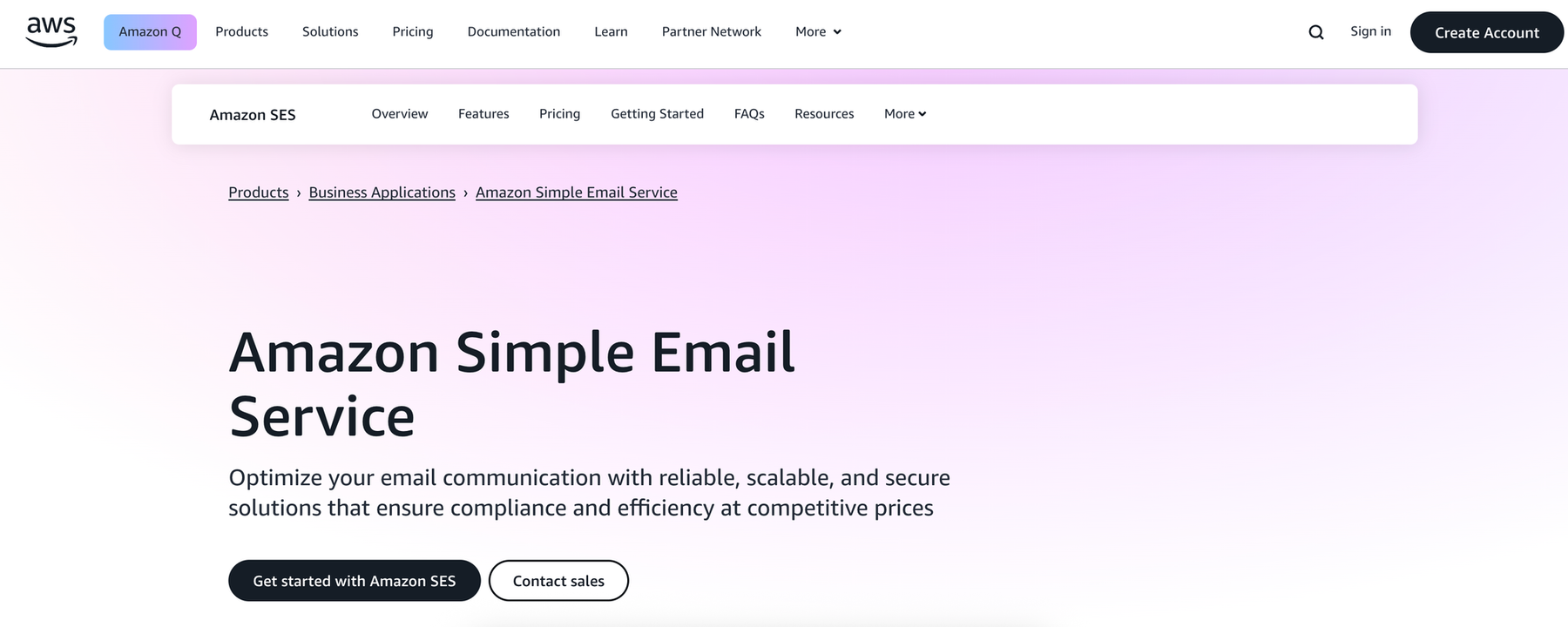
Amazon Simple Email Service (SES) caters predominantly to users with a strong technical background, offering a high level of customisation and control at a lower cost.
Those with the expertise to manage the complexity of Amazon SES might favour its scalability and reliability over SendGrid, especially for transactional email needs.
5. Postmark
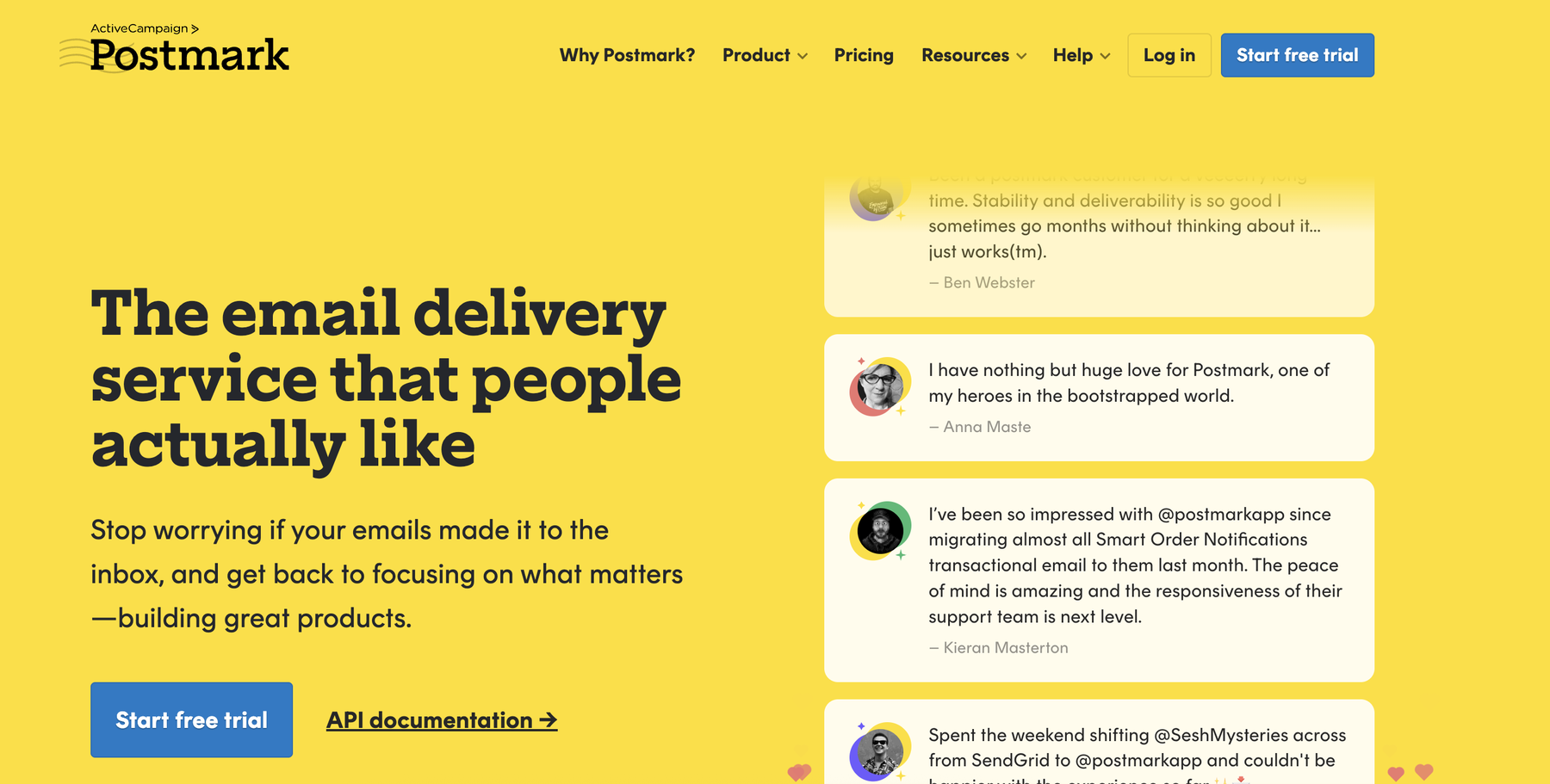
Postmark stands out for its exceptional delivery speeds and commitment to transactional emails, making it an excellent choice for applications requiring immediate email notifications.
While SendGrid provides comprehensive marketing and transactional email services, Postmark's laser focus on transactional emails means it often offers superior deliverability and speed for such messages.
6. SMTP2GO
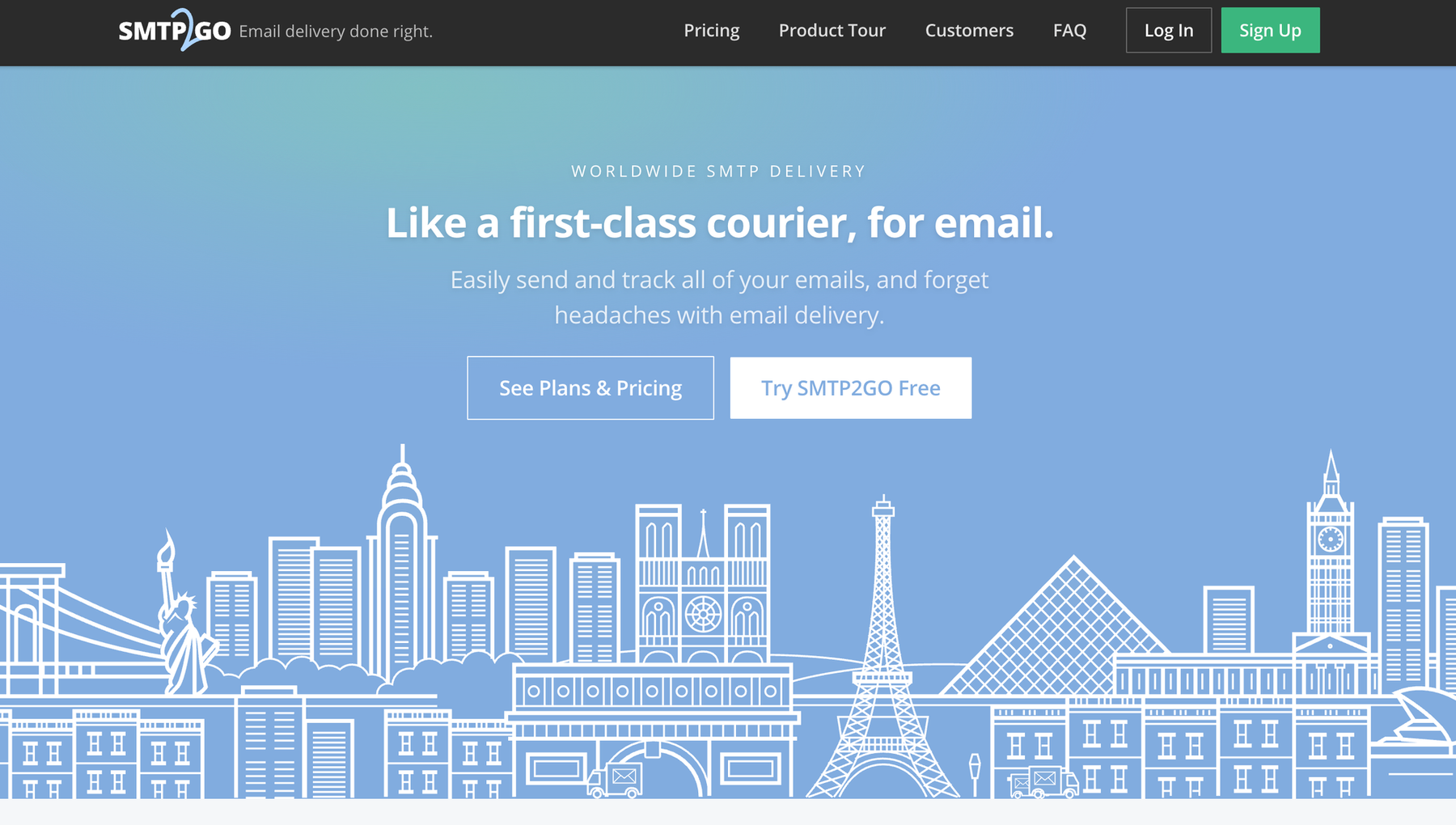
SMTP2GO operates from multiple data centers worldwide, ensuring optimal delivery speeds regardless of location. The platform offers excellent deliverability rates, real-time analytics, and competitive pricing with no setup fees.
Standout features include global infrastructure, detailed delivery reports, and 24/7 customer support. The platform's pay-per-email model provides flexibility for businesses with irregular sending patterns.
7. TurboSMTP
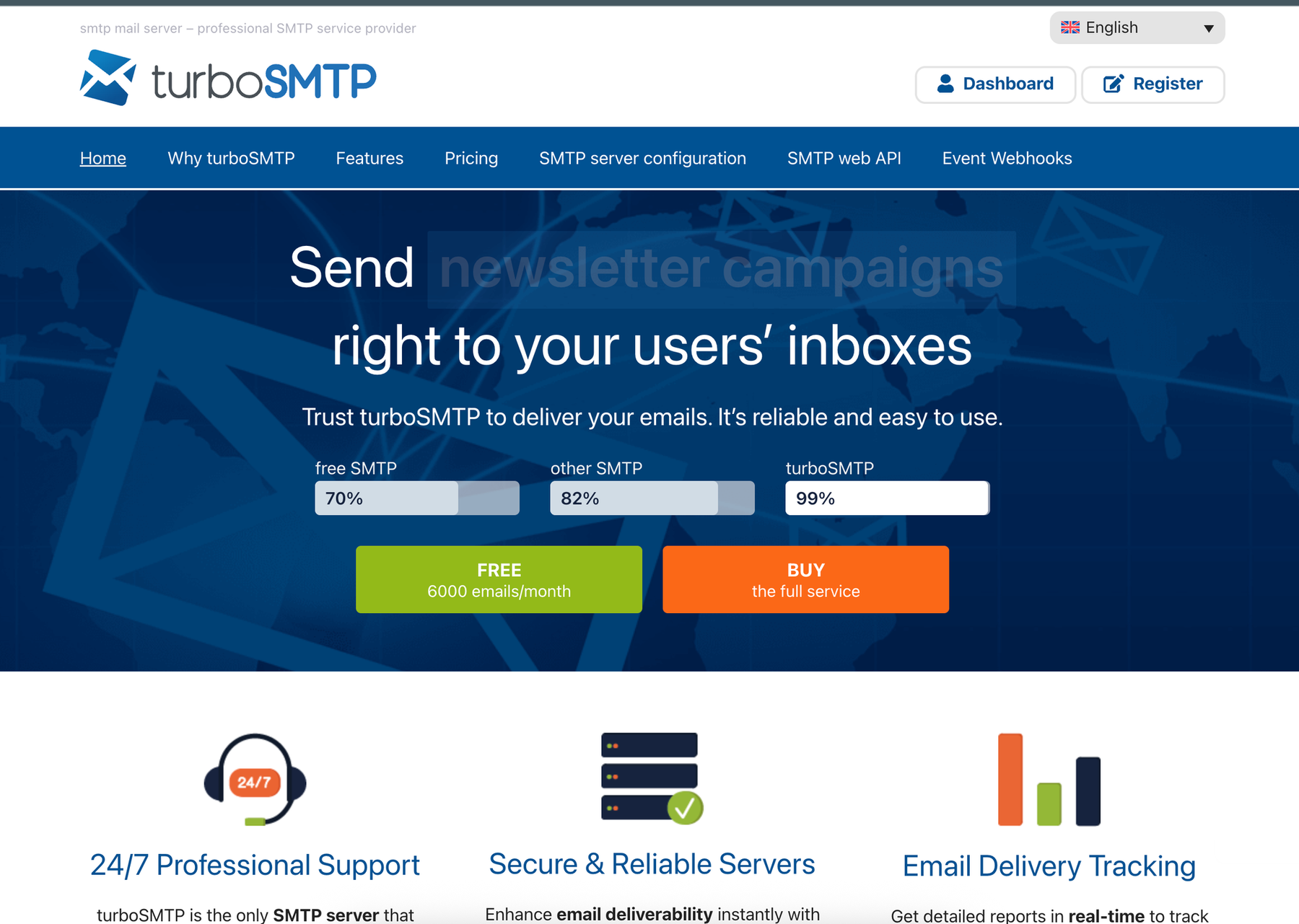
TurboSMTP, based in Europe, offers excellent compliance with European data protection regulations. The platform provides fast email delivery, comprehensive tracking, and competitive pricing with no monthly commitments required.
Key advantages include European data centers, GDPR compliance, multilingual support, and flexible pricing options. The platform is particularly popular among European SMBs.
8. Brevo (formerly Sendinblue)
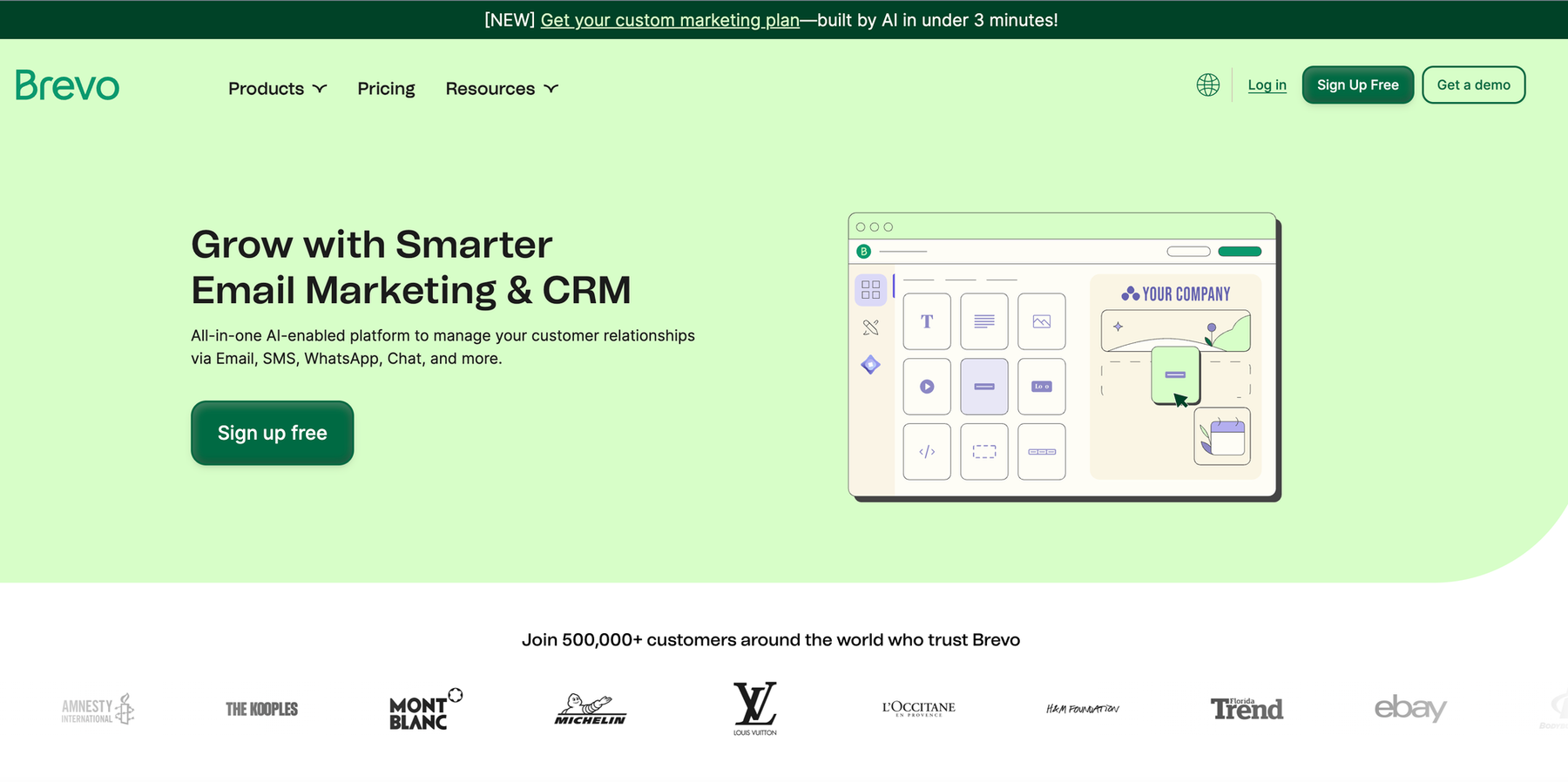
Brevo provides comprehensive marketing automation beyond just email, including SMS marketing and chat functionality. The platform offers advanced segmentation, detailed automation workflows, and extensive template libraries.
Notable features include multi-channel marketing, advanced automation, CRM integration, and competitive pricing. Brevo is excellent for businesses seeking an all-in-one marketing solution.
9. SMTP.com
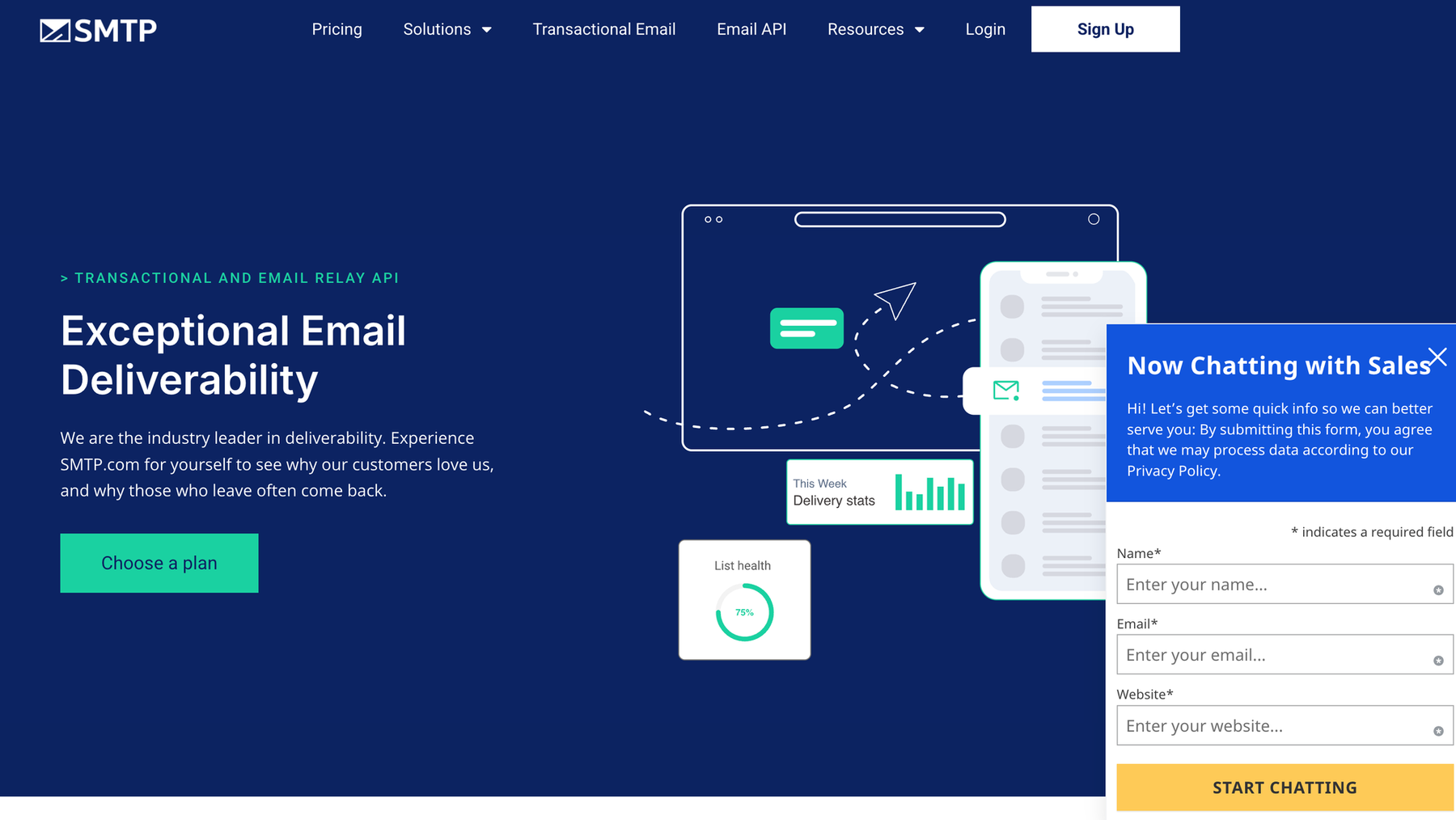
SMTP.com focuses on enterprise-grade email delivery with premium support and advanced security features. The platform offers dedicated infrastructure, priority support, and comprehensive compliance options.
Key features include enterprise security, dedicated support, custom solutions, and flexible infrastructure. SMTP.com is ideal for large organizations with specific compliance requirements.
10. Elastic Email
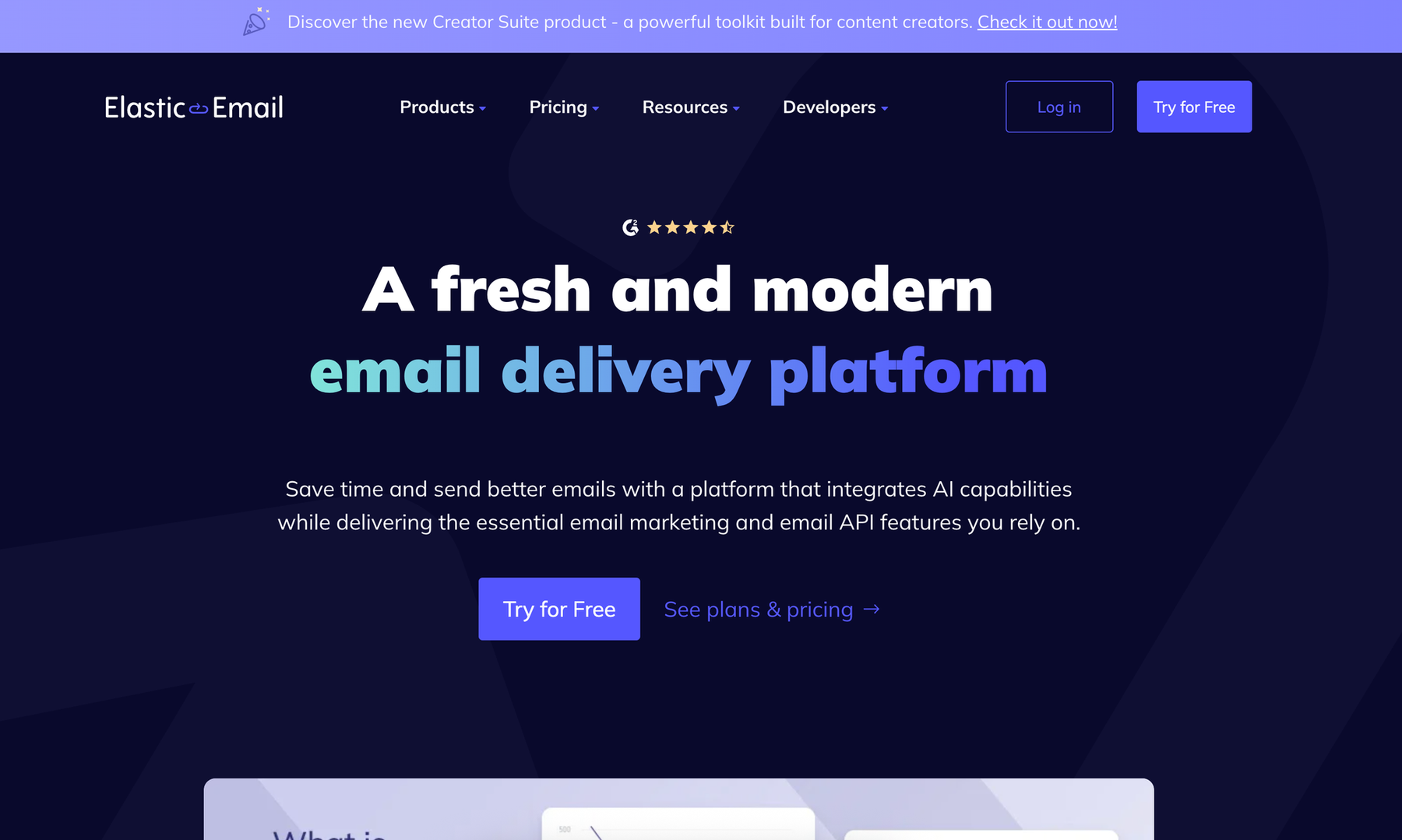
Elastic Email offers one of the most competitive pricing structures in the market, making it particularly attractive for businesses sending large volumes of emails. The platform provides robust email marketing and transactional email capabilities with advanced analytics and automation features.
Key features include pay-as-you-go pricing, advanced segmentation, A/B testing, a drag-and-drop editor, and a comprehensive API. Elastic Email is ideal for businesses that need to send high volumes while maintaining tight control over costs.
11. Mailtrap

Mailtrap stands out as a flexible option for both email sending and email testing, making it a strong alternative to SendGrid. It excels in ensuring high deliverability and performance for transactional emails while offering robust testing features that allow users to preview their emails in a safe, sandbox environment before they go live.
Ideal for developers and marketers, Mailtrap provides easy-to-use tools for monitoring email deliverability and optimizing email campaigns. Its comprehensive analytics help users gain insights into email performance, while its ability to seamlessly integrate with major platforms and SDKs gives it a technical edge. For businesses that prioritize email quality assurance and testing along with sending, Mailtrap can be a practical solution.
Wrap Up
SendGrid has established itself as a solid platform, offering comprehensive solutions for both marketing and transactional emails. Its strengths lie in its scalability, reliability, and extensive toolset designed to meet a wide range of email marketing needs.
However, its technical complexity and potential cost barriers might pose challenges for small businesses or those without dedicated IT support.
For small businesses and newcomers to email marketing, platforms that prioritise ease of use and provide extensive support with technical expertise and a focus on transactional emails , such as Maileroo, might be more beneficial.


